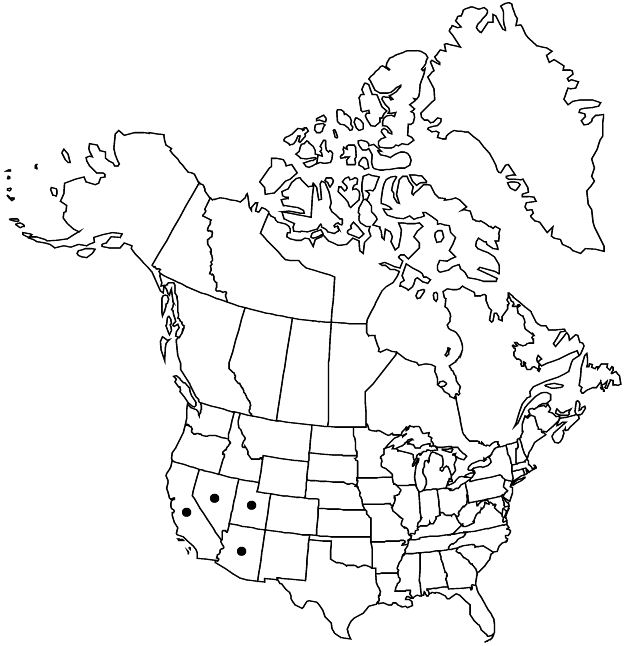Purshia tridentata var. glandulosa
Proc. Calif. Acad. Sci., ser. 2, 5: 680. 1895.
Stems: young long shoots glabrous or sparsely hirtellous, often stipitate-glandular. Leaves monomorphic, both long- and short-shoot leaves winter persistent; blade obovate to spatulate (when small), coriaceous-thickened, 3(–5)-lobed, lobes oblong-linear, narrow, central lobe deflexed, 2 lateral ascending, margins strongly revolute, often with large, resiniferous, punctate glands, abaxial surface arachnoid-villous, midvein glabrous, glabrate, or hirtellous, adaxial glabrous, sometimes weakly arachnoid-villous (this often obscured by broad, glabrous midvein in dried leaves) or hirtellous. 2n = 18.
Phenology: Flowering Apr–May.
Habitat: Juniper-pinyon, Joshua tree woodlands, desert blackbrush scrub, chaparral at desert margins
Elevation: (600–)800–1500 m
Distribution

Ariz., Calif., Nev., Utah, Mexico (Baja California).
Discussion
Variety glandulosa is a derivative of var. tridentata. Some sterile specimens of var. glandulosa cannot be distinguished from Purshia stansburyana; both taxa sometimes have similar leaves, and hirtellous, more or less stipitate-glandular young stems.
G. L. Stebbins (1959) and H. C. Stutz and L. K. Thomas (1963) hypothesized that var. glandulosa is a product of hybridization and introgression between Purshia tridentata and P. stansburyana. Although introgression would explain certain similarities, P. tridentata stands as a distinct species strongly differentiated by ovary-fruit characteristics and dimorphic leaves, which allow it to adapt to a wide range of habitats. Hybrids with P. stansburyana are discussed under the latter species.
Selected References
None.